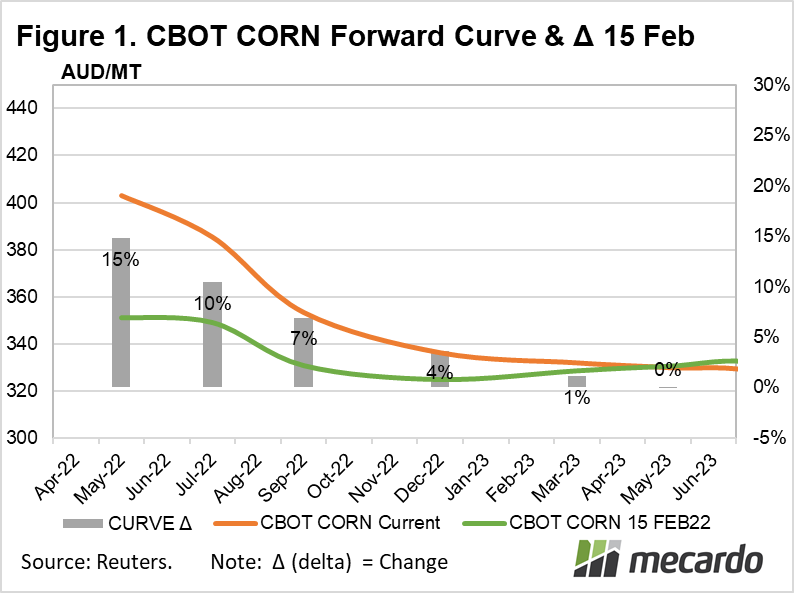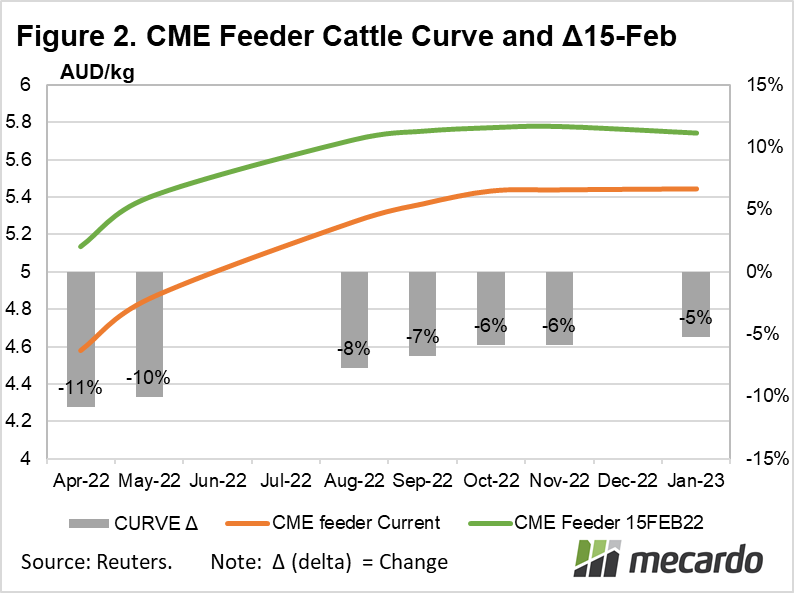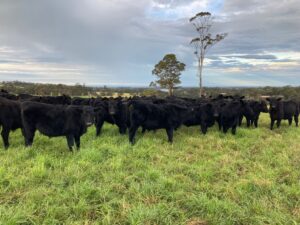The USA is a nation that loves its convenience foods, and even cattle are part of the fast-food obsession, with 95% of home-grown beef landing on American’s plates being from a grain-finished source. The Russian war on Ukraine has pushed the price of feedgrains into much higher territory lately - which means that the cost involved with producing a pound of steak has risen also.
In the USA, feeder cattle prices are related to corn prices, and hay prices, two of the key inputs required for the finishing of cattle in a feedlot.
High feed prices push down feeder cattle prices, particularly in the short term, as feedlot margins are squeezed by higher input costs. Over the longer term though, increased feed costs should flow through to final boxed beef prices as cattle supply reduces in response to lower prices.
The outbreak of war between Russia and Ukraine, which account for 30% of world wheat exports, and 17% of corn export, has caused a stratospheric spike in wheat prices, and a 15% surge in Chicago short term corn prices. (figure 1)
The price of nearby CME feeder cattle tumbled over 10% in Aussie dollar terms in the last fortnight in response to the spike in feed costs as grain markets rally due to the invasion of Ukraine by Russia. (figure 2)
If we consider figure 1, and figure 2 in tandem, the magnitude of the fall in the feeder cattle futures price curve over time has largely followed the inverse of the pattern displayed by the US corn market.
Corn prices trading higher in the short term than toward the back of 2022 is indicative of an expectation that the impact of the Ukrainian situation will resolve itself quickly, and corn prices will come off beyond 2022.
Feedlot beef supply is strong at present, with Steiner reporting that the inventory of market ready cattle on feed is currently 12% above the 5 year average at present.
Further along the supply chain, the US Choice boxed beef cutout has been on a downhill run for almost a month and is now 16% lower than where it sat in late January. (figure 3)
This is related to weakening US demand, evidenced by depressed consumer sentiment, and high supply as the US liquidates its herd. However, the liquidation will support prices in the future as the smaller herd will constrain supply through lower calf crops and rebuild related retention if the seasons turn more positive. Angus points out in his article today that lean economic times in the US can cause a switch to burgers, and hence lean 90CL, which works well for Australia.
What does it mean?
The domestic US cattle industry has taken a hit from all sides, with drought impacting calf producers, skyrocketing grain prices pummeling the profit margins of feedlots, and demand faltering, impacting beef prices. The result has been a flood of cattle in the face of increasing costs of production, and insufficient demand to maintain final beef prices. The good news for Australia is that the liquidation of the US herd will curtail supply in future years, and support export demand and prices.
Have any questions or comments?
Key Points
- 95% of domestic American beef consumption is sourced from cattle finished on grain.
- Feed prices have risen to high levels recently due to the Russian invasion of Ukraine.
- Liquidation of the US herd will support beef prices beyond 2023.
Click on figure to expand
Click on figure to expand
Click on figure to expand
Data sources: CME, USDA















